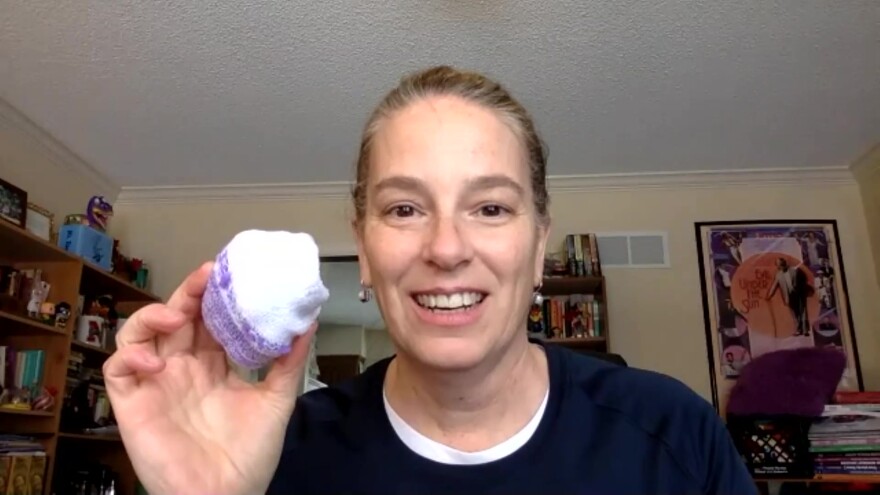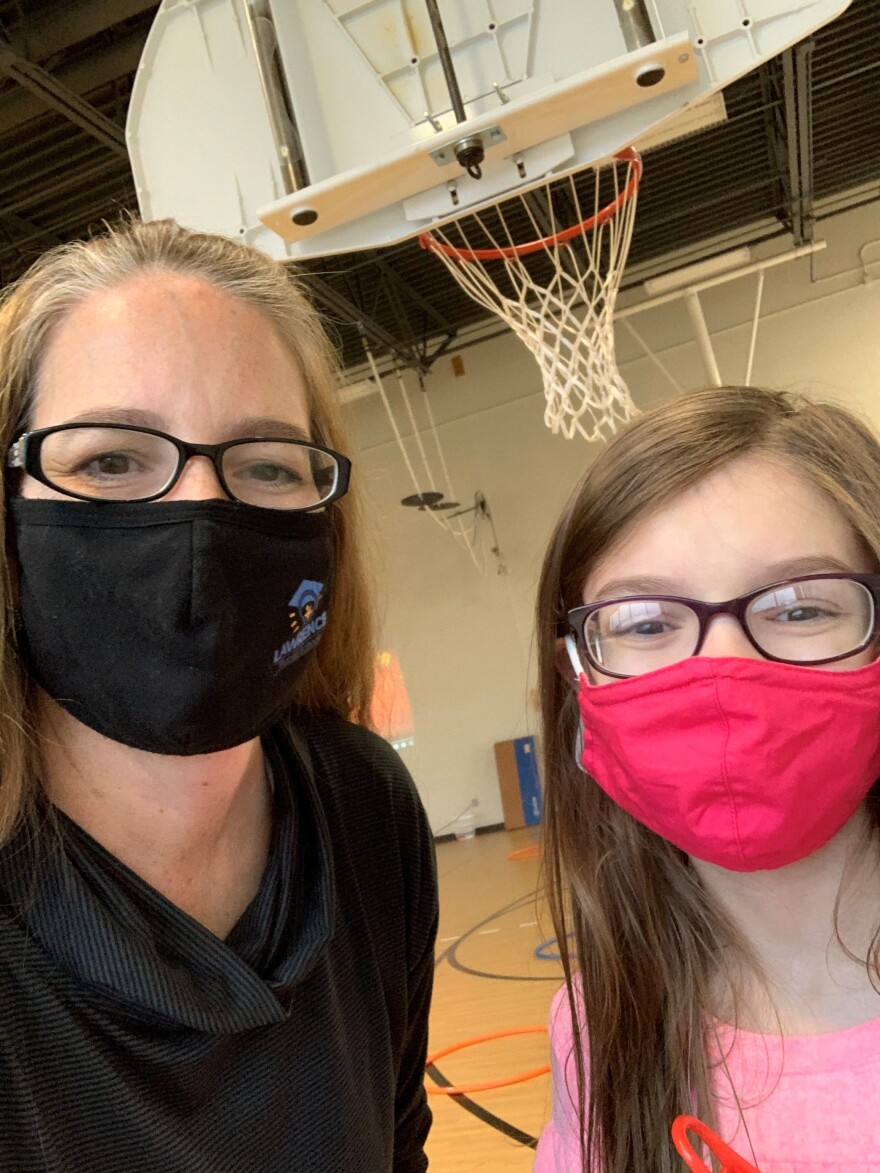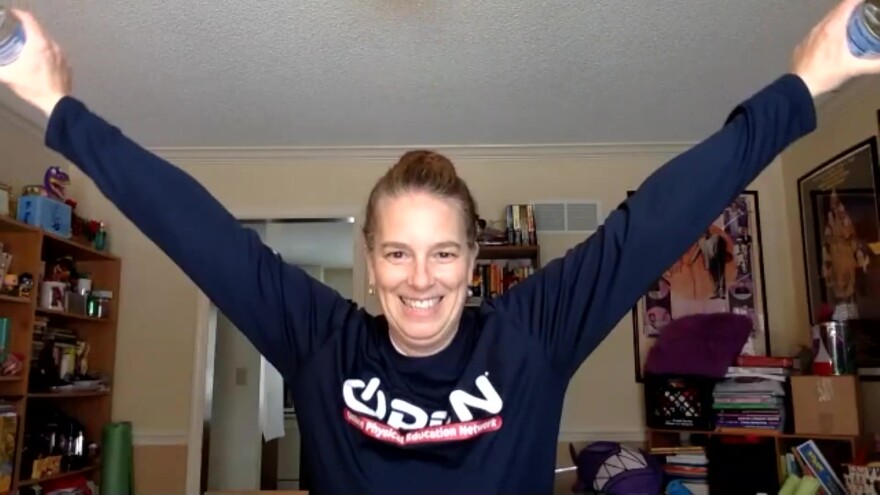For more stories like this one, subscribe to Real Humans on Apple Podcasts or Spotify.
If there is a word that accurately conveys the level of cold that hit Kansas City this week, it's a word I don't know. The otherworldly chill felt hostile to human life.
The wind chill dipped to -32 just after 7 a.m. on Monday, and by then, the scene inside my house had taken a sharp turn from cozy to pathetic.
Over the weekend, I'd been determined to make the best of the convergence of a polar vortex teaming up with a pandemic to keep me inside. I took to constructing ice lanterns for our porch by filling balloons with water and letting them freeze into crystal balls. The spheres of ice looked cool, but I couldn't light the candles inside; every time I tried, cold air snuffed out the flame.
I soon gave up, taking refuge under blankets, emerging only for boring, necessary things like a fresh glass of water.
By Monday, I'd become one with the couch.
It was in this sad state that a tweet from a P.E. teacher caught my eye.
Stephanie Dickson of Sunset Hill Elementary in Lawrence had just finished teaching her first remote P.E. class of the day. She'd already logged a mile and a half from the confines of her tiny home office, and she still had six more classes to go. I joked, in response, that I needed P.E., and Dickson swiftly accepted the challenge, offering to teach me the way she teaches her 4th and 5th graders: on a screen.
Dickson is part of a new crop of teachers working behind the scenes to quietly revolutionize P.E.
Once upon a time, gym class meant changing into ugly starchy shorts to play competitive team games like dodgeball, where the object was to pummel as many classmates as possible with a hard rubber ball while avoiding being pummeled in return. Pushups and laps were routinely treated as forms of punishment. Crushing the opposition was the only reward. Children who didn't excel in team sports were chosen last for teams and teased by their peers, resulting — in some cases — in a lifelong aversion to exercise of any kind. Which seems counter to the whole point of a discipline called "physical education."
The new P.E. is totally upending the old model.
"The days of playing dodgeball are so over. We're so over that," Dickson says, explaining that nowadays the focus is individual fitness, not dodging balls. "We're not all going to be NFL football players and NBA basketball players. We want kids to grow up to be adults who can weather a pandemic."
Which brings us back to why we're here.

Dickson promised we wouldn't need any special equipment, explaining that she can't assume her students have it. So I showed up for our Zoom lesson in leggings and socks, standing in a spot with enough room to stretch my arms out in all directions. That's all the space Dickson can expect her kids to have, with some living in apartments and others doing remote classes from a community center where each student has to stay in a designated work space.
Dickson started class by sending me on a mission.
"I need you to get a rolled up pair of socks," she instructed. "And then if you have any two cans of canned goods, that's literally all we're going to work with today."
"Okay," I said. "I'll be right back."
"I'm timing you!" she shouted after me.
And suddenly, I was running. I raced around my house gathering up socks from my son's dresser and two cans of diced tomatoes from the kitchen cabinet. The socks would be my "ball" for throwing and catching, and the cans would be my hand weights.
When I reappeared on Zoom less than a minute later, Dickson was laughing. She'd been able to hear me running up the stairs, and that's the first lesson: set a timer. It motivates elementary school kids, and it works on me, too. Nobody even told me to run.
Dickson busted out the timer again for our first throwing and catching exercise, to see how many times I could toss my sock ball up in the air and catch it in a minute. Then we added claps between the toss and the catch, and that seemed simple enough, but then, we added squats to our throw-clap-catch routine.
"It takes coordination," Dickson notes.
"So that's kind of important," she adds, "because we're in a small space. I'm still getting my heart rate up because I'm raising my arms up above my heart, then you add the component of your lower body working on muscular endurance."
This was all happening pretty comfortably in the corner of my office.
We concluded our mini workout with red light green light. For the remote P.E. version, when Dickson holds up one green ball, that means to run in place. A second green ball means go faster, and a red ball means stop.
After that, we ended with some breathing exercises to calm back down.
In all honesty, my brief encounter with 21st century P.E. was fun and invigorating, and I desperately needed it. If an informal poll I conducted on Twitter is any indication, I'm not alone. I supplied three options characterizing people's physical activity levels at this point in the pandemic: A: I'm part of the couch now. B: Never too cold for a jog! C: Other. 75% of the 116 respondents chose A: part of the couch.
Dickson, like other P.E. teachers, initially struggled to adapt her methods to the current circumstances. Some districts have eliminated P.E. because it's so hard to teach remotely. Technology is a hassle, particularly for teachers who typically spend their days in gyms, away from screens. Making sure kids are participating without requiring them to open their homes up to the whole class with the video function has also been tricky. But Dickson argues that with all the burdens this pandemic has placed on kids' mental and physical health, the benefits of being active are more crucial than ever.
That's probably true at any age.

"People have got to be really creative and sometimes it's just easier just to give up," Dickson says. "And your back hurts, your eyes hurt. When I was teaching remote for eight hours a day solid, my eyes hurt so bad and I was getting such bad headaches. And I just thought, 'How are kids doing this? How are people doing this?' And it just, it broke my heart. And I thought, 'Well, I'm going to try and make this as fun as I can.' Because it sucks. I mean, it really does."
I'm not the first adult to want in on the techniques she's developed specifically to counteract this unprecedented suckiness. Dickson tells me that parents and grandparents occasionally appear onscreen for her classes, and so do younger siblings who aren't in school.
"You never know who's going to show up for P.E.," she says with a laugh.
And that includes random journalists.
I've kept a sock-ball on my desk, as a reminder to get up and play.







